- About
- Admissions
- Study at AUS
- Prospective Students
- Bachelor's Degrees
- Master's Degrees
- Doctoral Degrees
- Admission Publications
- International Students
- Contact Admissions
- Grants and Scholarships
- Sponsorship Liaison Services
- Testing Center
- New Undergraduate Student Guide
- Undergraduate Orientation
- New Graduate Student Guide
- Graduate Orientation
- File Completion
- Payment Guide
- Students with Disabilities
- Executive and Continuing Education
- Academics
- Life at AUS
- Research
- Publications
- Contact Us
- Apply Now
- .
Overview
Second International Workshop on Recent Advances in Functional Materials Research
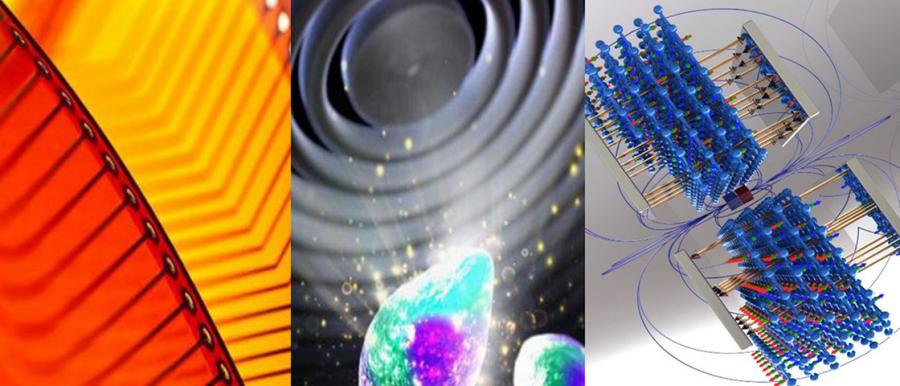
The Materials Science and Engineering Research Institute (MSERI) is pleased to hold its Second International Workshop on Recent Advances in Functional Materials Research. The interdisciplinary scope of the workshop will cover a wide range of synthesis and nanofabrication techniques with an overview of their various applications. Topics to be covered include: band structure of functional electronic materials, X-ray and laser spectroscopy of functional materials, lithium ion batteries, electrochemical energy storage materials, metal organic frameworks (MOFs), energy conversion and storage materials, solid oxide fuel cells, Spintronic, and artificial intelligence electronics.
The technical program of the workshop will consist of six keynote lectures delivered by internationally renowned researchers from Stanford University and the University of Kentucky in the US; the University of Kiel-Germany; the Foundation for Research and Technology-Greece; the National University of Singapore-Singapore; and KAUST-Saudi Arabia. The lectures will be followed by roundtable discussions, where participants will have the opportunity to carry out thorough discussions, exchange ideas and explore means of collaboration on different fronts.
|
Day 1: Tuesday, February 19, 2019 |
|
|
Time |
Activity |
|
8:30 a.m. – 9:00 a.m. |
Arrival |
|
9:00 a.m. – 9:30 a.m. |
Introduction to the Workshop by Professor Ali Alnaser Interim Director of Materials Science and Engineering Research Institute, American University of Sharjah Welcoming Remarks by Professor Wei Zhao Chief Research Officer, American University of Sharjah |
|
9:30 a.m. – 10:30 a.m. |
Dr. Friedrich Prinz, Stanford University |
|
10:30 a.m. – 11:00 a.m. |
Coffee Break |
|
11:00 a.m. – 12:00 p.m. |
Dr. Mohamed Eddaoudi, King Abdullah University of Science and Technology |
|
12:00 p.m. – 1:00 p.m. |
Dr. Emmanuel Stratakis, Institute of Electronics Structure and Laser (IESL) of the Foundation for Research and Technology – Hellas (FORTH) |
|
1:00 p.m. – 2:00 p.m. |
Lunch Break |
|
2:00 p.m. – 4:00 p.m. |
Poster Session and Round Table Discussions |
|
Day 2: Wednesday, February 20, 2019 |
|
|
Time |
Activity |
|
8:30 a.m. – 9:00 a.m. |
Arrival |
|
9:00 a.m. – 10:00 a.m. |
Dr. Venky Venkatesan, National University of SIngapore |
|
10:00 a.m. – 11:00 a.m. |
Dr. Michael Bauer, University of Kiel |
|
11:00 a.m. – 11:30 a.m. |
Coffee Break |
|
11:30 a.m. – 12:30 p.m. |
Dr. Yang Tse Cheng, University of Kentucky |
|
12:30 p.m. – 1:30 p.m. |
Lunch Break |
|
1:30 p.m. – 3:30 p.m. |
Poster Session and Round Table Discussions |
- Faculty Development Center, Library Building – Workshop
- Main Building Dining Room – Lunch
 Dr. Michael Bauer
Dr. Michael Bauer
Full Professor
Department of Physics
University of Kiel
Dr. Michael Bauer obtained his PhD from the Chemistry Department of the Federal Institute of Technology in Zurich, Switzerland (ETH Zurich) on studies of ultrafast model-type adsorbate-surface charge transfer processes. He studied physics at the Technical University of Munich, where he received his Diploma in 1993. He became full professor in the Physics Department in Kiel University in 2012. In his current research, Professor Bauer focuses on ultrafast processes in solids with particular emphasis on two-dimensional and correlated materials as well as on plasmonic processes at surfaces. He is particularly known in the community for his contributions to the development of novel photoemission-based time-resolved experimental techniques such as time-resolved ARPES using high harmonic generation pulses and time-resolved PEEM. Before he joined Kiel University, he stayed for six years at the University of Kaiserslautern, where he was particularly involved in the study and the coherent control of plasmonic excitations in nanoparticles. He did his PostDoc in the group of Margaret Murnane and Henry Kapteyn at the Center of Ultrafast Optical Science (CUOS), University of Michigan, Ann Arbor, and at JILA, University of Colorado, Boulder, where for the first time he demonstrated femtosecond time-resolved ARPES using high harmonic generation sources.
In 2005, Dr. Bauer received the Gaede-price of the German Vacuum Society for his pioneering work in the field of time-resolved photoemission spectroscopy using ultrafast laser pulses. In 2011, he got offers for full professor positions at the University of Halle and the University of Göttingen. Professor Bauer is a past recipient of a fellowship by the Swiss National Fund, as well as the research fellowship of JILA, Boulder, Colorado, where he was a visiting professor in 2010.
Dr. Bauer is author of more than 100 publications including numerous papers in Nature, Nature Materials, Nature Communications, and Physical Review Letters.
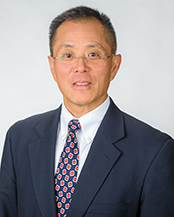 Dr. Yang-Tse Cheng
Dr. Yang-Tse Cheng
Frank J. Derbyshire Professor of Materials Science
Department of Chemical and Materials Engineering
University of Kentucky
Dr. Y.T. Cheng is the Frank J. Derbyshire Professor of Materials Science and Professor in the Department of Chemical and Materials Engineering at the University of Kentucky, where he has worked since 2008. Previously, he was a Technical Fellow and Laboratory Group Manager for Engineered Surfaces and Functional Materials at the General Motors Research and Development Center. His research activities cover topics such as small scale mechanical property measurements; growth, structure, and properties of nanostructured materials; microscopic shape memory and superelastic effects; magnetorheological fluids; superhydrophobic surfaces; ion beam modification of materials; automotive applications of new materials and processes, including electrical contacts, high power-density engines and transmissions, environmentally friendly machining processes, hydrogen sensors, fuel cells, metal hydride batteries, and lithium ion batteries.
He graduated from the California Institute of Technology with a BS degree in physics/mathematics, and MS and PhD degrees in applied physics. He has published more than 180 papers and holds 48 US patents. He is a Fellow of the American Physical Society, Materials Research Society, and National Academy of Inventors. His biographical information can be found at https://web.engr.uky.edu/~ycheng/.
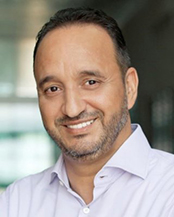 Dr. Mohamed Eddaoudi
Dr. Mohamed Eddaoudi
Distinguished Professor of Chemical Science
Director of the Advanced Membranes and Porous Materials Center
King Abdullah University of Science and Technology (KAUST)
Dr. Mohamed Eddaoudi received his master's and doctorate in chemistry from Denis Diderot University (Paris VII) in Paris, France. Dr. Eddaoudi is a member of the American Chemical Society. He received the Outstanding Faculty Research Achievement Award (2004 and 2007) and the Chemistry Outstanding Teaching Award (2005 and 2008) from the University of South Florida. He was awarded the prestigious National Science Foundation Career Award in 2006. Dr. Eddaoudi has given more than 150 invited talks at conferences and universities since 2002. In 2014, 2015, 2016, 2017 and 2018, he was name among the Thomson Reuters Highly Cited Researchers, and, in 2014, among the world’s most influenced scientific minds.
His contribution to the field of metal-organic frameworks (MOFs) has been highly visible in peer-reviewed journals, as evidenced through his recognition by ISI in 2007 as one of the top 100 most cited chemists of the past 10 years (ranked #68), https://in-cites.com/nobel/2007-che-top100.html.
His research interests include developing new strategies for the rational design and construction of functional solid state materials; design and synthesis of functional porous solids for energy and environmental sustainability, including coordination polymers, metal-organic frameworks (MOFs), porous organic polymers (POPs) for hydrogen storage, methane storage, CO2 capture & storage; and metal-organic materials based sorbents and membranes addressing the energy-intensive gas or vapor separations.
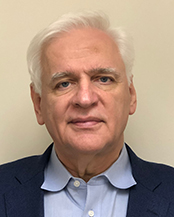 Dr. Fritz Prinz
Dr. Fritz Prinz
Finmeccanica Professor
Mechanical Engineering
Materials Science and Engineering
Stanford University
Dr. Fritz Prinz is the Finmeccanica Professor in the School of Engineering at Stanford University, Professor of Materials Science and Engineering, Professor of Mechanical Engineering and Senior Fellow at the Precourt Institute for Energy. He also serves as the Director of the Nanoscale Prototyping Laboratory and Faculty Co-director of the NPL Affiliate Program. A solid-state physicist by training, Dr. Prinz leads a group of doctoral students, postdoctoral scholars, and visiting scholars who are addressing fundamental issues on energy conversion and storage at the nanoscale. In his laboratory, a wide range of nano-fabrication technologies are employed to build prototype fuel cells, capacitors and batteries that are used to test new concepts and novel material structures through atomic layer deposition, scanning tunneling microscopy, impedance spectroscopy and other technologies. In addition, his group uses atomic scale modeling to gain insights into the nature of charge separation and recombination processes.
Before coming to Stanford in 1994, he was on the faculty at Carnegie Mellon University. Dr. Prinz earned a PhD in Physics at the University of Vienna.
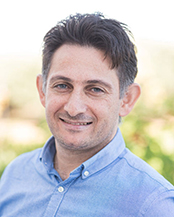 Dr. Emmanuel Stratakis
Dr. Emmanuel Stratakis
Research Director
Institute of Electronics Structure and Laser (IESL) of the Foundation for Research and Technology- Hellas (FORTH)
Dr. Emmanuel Stratakis received his PhD in Physics from the University of Crete in 2001 from the University of Crete. After graduating, he joined as a visiting researcher the IESL-FORTH, working on the ultrafast laser engineering of materials and as an adjunct professor at the Department of Materials Science and Technology, University of Crete. In the fall semesters of 2006 and 2008, he was appointed as a visiting researcher at the Department of Mechanical Engineering of the University of California, Berkeley. In 2007 he was elected Researcher at IESL-FORTH where he is leading the Ultrafast Laser Micro- and Nano-processing Laboratory (https://stratakislab.iesl.forth.gr), comprising a team of 35 postdocs, PhD students, technicians and administrative personnel.
His research interests are in the fields of ultrafast laser interactions with materials for (a) biomimetic micro- and nano- structuring (b) Advanced photonic processes for photovoltaics and energy storage, c) nanomaterials synthesis and diagnostics for optoelectronics and (c) biomaterials processing for tissue engineering. He has delivered more than 40 invited and keynote lectures and has been organizer and chair in major international scientific conferences. He has over 170 SCI publications and more than 6000 citations and he has coordinated many National and EU grants. Since 2015, he has been the Director of the European Nanoscience Facility of FORTH, part of the NFFA-Europe EU Infrastructure, where he is a member of the General Assembly. He is a National Representative to the High-Level Group of EU on Nanosciences, Nanotechnology and Advanced Materials and a National Expert for the Horizon 2020 committee configurations on: Nanotechnologies, Advanced materials, Biotechnology, Advanced Manufacturing and Processing. He is a member of the Scientific Committee of COST, of the Physical Sciences Sectoral Scientific Council of the National Council for Research & Innovation of Greece and National Delegate of the OECD Working Party on Bio-, Nano- and Converging Tech (BNCT).
 Dr. Thirumalai Venky Venkatesan
Dr. Thirumalai Venky Venkatesan
Director, Nano Institute
Professor, Departments of ECE, Physics, MSE and NGS
National University of Singapore
Professor T. Venkatesan is currently the Director of the Nano Institute at the National University of Singapore (NUSNNI) where he is a Professor of ECE, Physics, MSE and NGS. He wore various hats at Bell Labs and Bellcore before becoming a Professor at University of Maryland. As the inventor of the pulsed laser deposition (PLD) process, he has over 760 papers and 30 patents and is globally among the top 100 physicists (ranked at 66 in 2000) in terms of his citations (over 43,800 with a Hirsch Index of 106 - Google Scholar). He has graduated over 45 PhDs, 35 Post Docs and over 35 undergraduates.
He is also the founder and Chairman of Neocera, a company specializing in the area of PLD and magnetic field imaging systems. Close to 10 of the researchers (PhD students and Post Docs) under him have become entrepreneurs starting over 17 different commercial enterprises. He is a Fellow of the APS, winner of the Bellcore Award of Excellence, Guest Professor at Tsinghua University (China), Winner of the George E. Pake Prize awarded by American Physical Society (2012), President’s Gold Medal of the Institute of Physics Singapore, Academician of the Asia Pacific Academy of Materials, Fellow of the World Innovation Forum, was a member of the Physics Policy Committee (Washington, DC), the Board of Visitors at UMD and the Chairman, Forum of Industry and Applications of Physics at APS. He was awarded the outstanding alumnus award from two Indian Institute of Technologies- Kanpur (2015) and Kharagpur (2016), India.
The workshop will cover the major areas related to materials science and engineering. The subject areas may include, but are not limited to the following domains:
- Title: Ultrafast Dynamics in Solids Probed by Time-Resolved XUV-ARPES
By: Dr. Michael Bauer
Time- and angle-resolved photoemission spectroscopy is the potentially most direct and comprehensive, energy- and momentum-selective probe of ultrafast processes in solids that couple to the electronic degrees of freedom. Angular resolution enables one in this context to monitor the temporal evolution of the valence electronic band structure of a solid at selected— and possibly critical—points in momentum space [1]. The application of XUV photon pulses enlarges the accessible momentum regime considerably so that band structure transients within the entire Brillouin zone can be recorded [2, 3].
After a general introduction into the experimental technique [4], I will discuss recent results of our group on the ultrafast dynamics in solids as probed by time-resolved XVU-ARPES. Examples include hot electron dynamics in graphite [5] and semiconducting transition metal dichalcogenides (TMDC’s) [6), ultrafast melting processes of charge-ordered phases in TMDCs [3, 7], and coherent phonon dynamics in the iron-pnictide BaFe2As2 [8].
References
[1] F. Schmitt, P.S. Kirchmann, U. Bovensiepen, R.G. Moore, L. Rettig, M. Krenz, J.-H. Chu, N. Ru, L. Perfetti, D.H. Lu, M. Wolf, I.R. Fisher, Z.-X. Shen, Science 321, 1649 (2008).
[2] S. Mathias, L. Miaja-Avila, M.M. Murnane, H. Kapteyn, M. Aeschlimann, and M. Bauer, Rev. Sci. Instr. 78, 083105 (2007).
[3] T. Rohwer, S. Hellmann, M. Wiesenmayer, C. Sohrt, A. Stange, B. Slomski, A. Carr, Y. Liu, L. Miaja Avila, M. Kalläne, S. Mathias, L. Kipp, K. Rossnagel, and M. Bauer, “Collapse of long-range charge order tracked by time-resolved photoemission at high momenta,” Nature 471, 490 (2011).
[4] M. Bauer, J. Phys. D: Appl. Phys. 38, R253 (2005).
[5] G. Rohde, A. Stange, A. Müller, M. Behrendt, L.-P. Oloff, K. Hanff, T. Albert, P. Hein. K. Rossnagel, and M. Bauer, Phys. Rev. Lett., accepted, (Editors suggestion).
[6] P. Hein, A. Stange, K. Hanff, L.X. Yang, G. Rohde, K. Rossnagel, and M. Bauer, Phys. Rev. B 94, 205406 (2016), (Editors suggestion).
[7] S. Hellmann, T. Rohwer, M. Kalläne, K. Hanff, C. Sohrt, A. Stange, A. Carr, M. M. Murnane, H. C. Kapteyn, L. Kipp, M. Bauer, and K. Rossnagel, Nat. Commun. 3, 1069 (2012).
[8] L. X. Yang, G. Rohde, T. Rohwer, A. Stange, K. Hanff, C. Sohrt, L. Rettig, R. Cortes, F. Chen, D. L. Feng, T. Wolf, B. Kamble, I. Eremin, T. Popmintchev, M. M. Murnane, H. C. Kapteyn, L. Kipp, J. Fink, M. Bauer, U. Bovensiepen, and K. Rossnagel, Phys. Rev. Lett. 112 207001 (2014).
- Title: Understanding the Coupled Electrochemical-Mechanical Behavior of Materials for Improving the Performance and Durability of Lithium Ion Batteries
By: Dr. Yang-Tse Cheng
With an increasing demand for higher energy and power density of lithium ion batteries (LIBs), the coupled electrochemical-mechanical degradation of electrode materials becomes a more pressing problem. In particular, fracture and delamination of electrodes can occur during repeated charging and discharging of LIBs. An improved understanding of the mechanical behavior of electrode materials, which often evolves with the state-of-charge and cycle number, is therefore necessary for improving the performance and durability of LIBs and other types of batteries. In this presentation, I will provide an overview of our recent work on using three complementary measurement techniques: (1) in situ electrochemical nanoindentation, (2) peel adhesion and cohesion test, and (3) electrode curvature measurement to help understand several coupled effects between mechanical and electrochemical behavior of materials on the performance and durability of high capacity electrodes. Examples include Si/polymer binder porous composite electrodes and lithium metal electrodes. These in situ characterization techniques may also be used to investigate the coupled electrochemical-mechanical behavior of a wide range of electrochemical energy storage materials under realistic working conditions.
- Title: MOF Design to Applications: Impact of Pore System Control on Gas Separations and Storage
By: Dr. Mohamed Eddaoudi
Metal-organic frameworks (MOFs) burgeoned in recent years due to effective design strategies (i.e., reticular chemistry) for their synthesis and their inherent [and readily interchangeable] hybrid, functional character.
Markedly, MOFs are amenable to design and manipulation for desired function and application. Several design strategies have been utilized and developed to target viable MOF platforms based on edge transitive nets, minimal edge transitive nets and our recently introduced merged nets: molecular building block (MBB) approach, hierarchical supermolecular building block, supermolecular building layer approaches (SBB and SBL, respectively).
Various key gas/vapors separations are accomplished using energy intensive processes as exemplified by the olefin/paraffin separation, an essential separation in chemical industry.
Here we present our progress in the development of functional MOFs to address some energy-intensive separations. Successful practice of reticular chemistry had afforded the fabrication of various chemically stable fluorinated MOF adsorbent materials (NbOFFIVE-1-Ni, also referred to as KAUST-7 and AlFFIVE-1-Ni, also referred to as KAUST-8). The restricted MOF window resulted in the selective molecular exclusion of propane from propylene at atmospheric pressure, as evidenced by multiple cyclic mixed-gas adsorption and calorimetric studies. Remarkably, KAUST-7 maintains its distinctive separation properties in the presence of water as a result of its high chemical and hydrolytic stability. [1]
The development of suitable storage and refining processes makes natural gas an excellent alternative fuel, but before its transport and use, natural gas must first be dehydrated. Conventional dehydration agents are energy intensive. KAUST-8 selectively removes water and requires just 105°C for regeneration of the dehydrating agent.[2]
The deliberate control of the pore aperture-size of various selected MOFs and its impact on various separations will be discussed.
References:
[1] Cadiau, A.; Adil, K.; Bhatt, P. M.; Belmabkhout, Y.; Eddaoudi, M. “A metal-organic framework-based splitter for separating propylene from propane” Science, 2016, 353, 137-140.
[2] Cadiau, A.; Belmabkhout, Y.; Adil, K.; Bhatt, P. M.; Pillai, R. S.; Shkurenko, A.; Martineau-Corcos, C.; Maurin, G.; Eddaoudi, M. “Hydrolytically stable fluorinated metal-organic frameworks for energy-efficient dehydration” Science, 2017, 356, 731-735.
- Title: Ion Incorporation and Transport through Thin Membranes for Energy Conversion and Storage
By: Dr. Fritz Prinz
Ion selective membranes are an essential component in any electrochemical energy conversion and storage device, including fuel cells and batteries.
My talk will begin with insights from nature. I will briefly describe charge transfer reactions across thin thylakoid membranes in biological plant cells. In particular, I will discuss experiments that allowed us to directly extract photosynthetic electrons from live membranes, subject to the stimulus of light.
Next, I will discuss proton conducting polymeric membranes and the need for noble metal catalysts for enabling the reaction of protons with oxygen at comparatively low temperatures and sufficiently high rates. Finally, I will elaborate on oxide ion conducting membranes that allow energy conversion in high temperature devices such as Solid Oxide Fuel Cells. I will use quantum simulations to help predict oxide ion transport rates, and study the use of dopants for improving ion conductivity.
- Title: Applications of Ultrafast Lasers in Materials Science and Engineering
By: Dr. Emmanuel Stratakis
This presentation will focus on the application of advanced ultrafast photonic approaches for novel materials synthesis, as well as for the development of advanced photonic techniques to probe at the nanoscale, which are issues of great interest in current materials science and engineering research [Adv. Mat., 29, 1700335 (2017)].
In particular, Nature inspires us in tailoring unique surface properties based on synergetic effects of chemical composition and multiscale surface morphology. We show that highly controllable, biomimetic structures, exhibiting multifunctional water repellent, anti-reflection, friction reduction and photoresponsive properties can be directly written on metallic and dielectric surfaces upon processing with femtosecond laser beams of tailored polarization [Adv. Mat., 20, 4049 (2008) ; Biomicrofluidics, 5, 013411 (2011)]. It is shown that biomimetic laser structuring is a versatile method to tune neuronal cell adhesion, proliferation and orientation and can be promising for biomaterial scaffolds for neural tissue regeneration [Biomaterials 67, 115-128 (2015)].
The second part of the presentation will focus on the application of advanced ultrafast laser based techniques for the synthesis and diagnostics of materials and components in photovoltaic, light emitting, chemical sensing and energy storage systems. In particular, the pulsed laser assisted fabrication of transparent graphene electrodes and interlayers for flexible photovoltaic devices, is demonstrated [Adv. Func.l Materials, 25, 2213 (2015)]. Furthermore, we present a fast, non-destructive and roll-to-roll compatible photochemical method for the doping of graphene [Nanoscale, 6, 6925-6931(2014)] and transition metal dichalcogenide (TMD) crystals [2D Materials 6, 015003 (2018)]. By tuning the laser exposure time, it is possible to tune the doping levels to values that are suitable for photovoltaic and light emitting devices respectively. In parallel, our recent advances in the synthesis [Nanoscale, 9, 18202 (2017)] and femtosecond time-resolved spectroscopic diagnostics of perovskite nanocrystals as well as their composites with polymers [Chemical Science, 9 (42), 8121 (2018)] and phosphate glass are presented. The applications of the as-synthesized materials in perovskite photovoltaics [Nanoscale, 2018, DOI: 10.1039/C8NR10009H] sensors and energy storage systems [12] are demonstrated.
Finally, we present all-optical, non-invasive ultrafast laser-scanning optical microscopy methods to resolve, with unprecedented resolution, the crystallographic imperfections of atomically thin graphene, TMD and perovskite nanocrystals, via experimentally probing and theoretically interpreting their nonlinear optical properties [Light: Science & Applications 7 (5), 18005 (2018)].
- Title: Road to Ultra-Low Switching Energy Memories to Artificial Neurons
By: Dr. T. Venky Venkatesan
Memory devices are responsible for a significant fraction of the energy consumed in electronic systems- typically 25% in a laptop and 50% in a server station. Reducing the energy consumption of memories is an important goal. For the evolving field of artificial intelligence, the compatible devices must simulate a neuron. We are working on three different approaches towards these problems: one involving an organic metal centered azo complex, another involving oxide based ferroelectric tunnel junctions and the last involving real life neuronal circuits.
In the organic memristors that we have built on oxide surfaces, the device performance exceeds the ITRS roadmap specification significantly demonstrating the viability of this system for practical applications. More than that these organic memories exhibit multiple states arising from interplay of redox states and counter ion location studied by in-situ Raman and UV-Vis measurements leading to the possibility of neuronal systems. This organic family of molecules systems is extremely stable and reproducible- a significant departure from conventional organic electronics. On the oxide front the significant results are that ferroelectricity is seen even in two atomic layers of BaTiO3 or BiFeO3. Oxygen vacancy motion can also play an important role in changing the device characteristics leading to synaptic characteristics. Last but not the least, oxide surfaces can be utilized to force neurons to grow at specific places on a surface giving the potential for fabricating live neuronal circuits.
- Dr. Ali Alnaser
- Dr. Wael Abuzaid
- Dr. Mohammad Al-Sayah
- Dr. Mehmet Egilmez
- Dr. Taleb Ibrahim
- Dr. Rami Hawileh
Materials Science and Engineering Research Institute (MSERI)
+971 515 2340
PO Box 26666, Sharjah
United Arab Emirates
Payment Error
Thank You for Registering

